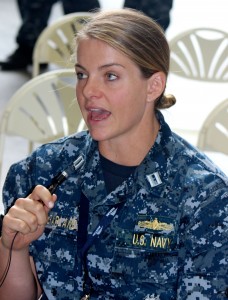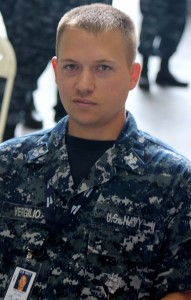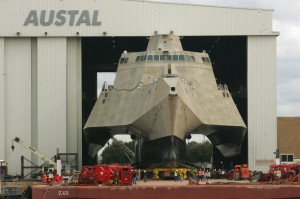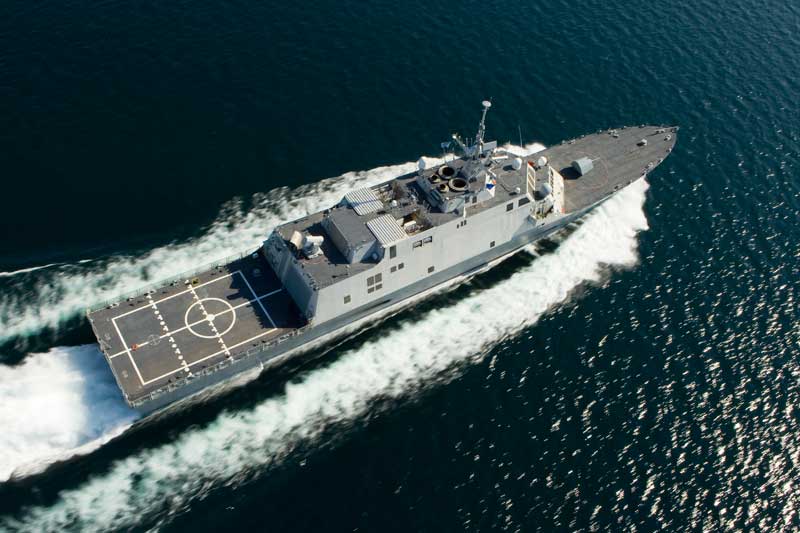2012-10-28 by Robbin Laird
As the littoral combat ships come to the fleet, sailors and seamen are learning how to operate the ship and to shape the concepts of operations for the new ships.
After the keel laying ceremony for LCS-6, I had a chance to talk to two of these LCS “newbies.”
The first person interviewed was Lt. Fiona McFarland, who is the main propulsion assistant on the USS Coronado, which is LCS 4. I visited this ship, which is in the water in Mobile Bay.
The second is the first crewmember of LCS-6. He is GSM-1 Adam Vergilioe.

Question: This is a completely new ship and the navy has no experience with littoral ships like this one. How are you approaching this learning experience?
McFarland: LCS is like you said, a completely new program for the Navy, and for us it’s cool to be a part of it at the beginning. Freedom and Independence are already in the water, and they’ve done a lot of the initial testing that’s proven this program. And for us to be on the ships that come right afterwards, it’s up to us to really to continue the process.
There are still some kinks in the program as to be expected with a brand new class of ship, and we’ve been given a lot of opportunities to help solve those problems.
Just this morning we were walking through the ship, and the folks at Austal have been terrific and I think they like showing us the ship.
We were walking around the engineering spaces, and we talked to the techs about them, and its kind of cool to be at the ground stage like this.
Question: What is the training approach for a propulsion person like you?
McFarland: We go through a 9-month training pipeline, which is mostly based in San Diego, which is where all the ships were going to be home ported originally.
And as we go through the training pipeline we learn all the systems, we learn all the computer controls, and the concept is when we’re finished with the training pipeline, we’re ready to go as sailors.
It is similar to how pilots are trained.

Question: So what does the first crewmember on a ship actually do?
Vergilioe: We’re responsible for welcoming our brothers and sister sailors into the crew. We are the original plank owners of the ship, which is a big Naval tradition.
Being a plank owner is something that a lot of sailors take a lot of pride in. We’re a part of the ship as she’s being built; we take a lot of ownership, and a lot of responsibility for the ship as she’s coming alive.
I think it’s extremely exciting to be the first crewmember because I am getting to see every part of the ship being built and am part of the process from the beginning.
Question: I have seen with the Osprey from the ground up. I have seen the first groups of maintainers and pilots form a community, which shared information as the plane become operational and gained operational experience.
I assume the same is happening with the LCS?
McFarland: I think it has to be in order for the program, and the squadron, and the Navy as a whole to accept the ships.
There has to be one overall group or an LCS community to learn how to use and to operate the ship.
We all have to come together and learn from each other, and teach each other because in order for us to succeed, we all have to be a part of the same team.



